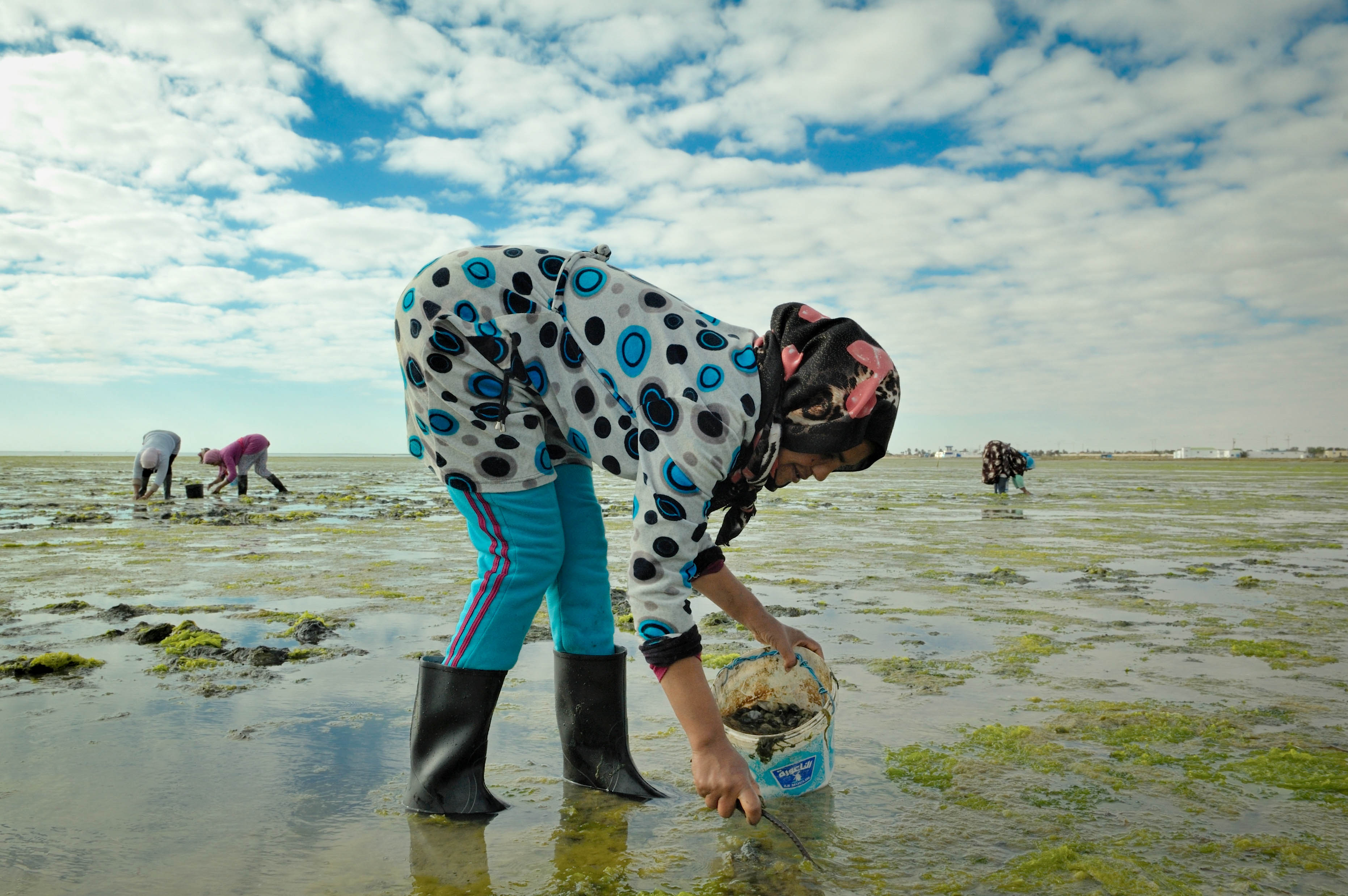
Photo:
The coastal zone of Tunisia is home to two-thirds of the total population. It is a densely populated area where much of the nation’s large cities are. The coastal region has a varied topography and an irregular 1,445 Km of continental coastline extended from the North to the East, and 450km of island coastline.
It has played a pivotal role in the countries cultural and economic progress. The diverse natural environment provides a wide range of services across several sectors. Overall, the coast houses more than 80% of economic activities, 90% of the total capacity for tourist accommodation and a large part of the irrigated agriculture in the country (Ministry of Environment and Development Planning 2001).
Today, the low-capacity to deal with the impacts of climate change in coastal zones represents the major issue Tunisia is facing. . In fact, it is inhibited by a lack of appropriate climate-sensitized policies and appropriate enabling legislations towards an integrated approach to coastal management.
By strengthening and implementing climate change adaptation and disaster risk reduction at the local and national level, the project is working to create a more climate-resilient communities. It offers a risk-based approach to strengthen resilience to climate change and provides opportunities to local actors to be an effective agent of change for better risk informed development in the coastal zones.
- Community
- National Governments
The coastal community of Tunisia
- Ministry of Environment, Coastal Protection and Planning Agency (APAL), Government of Tunisia
- United Nations Development Programme (UNDP)
- Global Environment Facility (GEF)
The project is designed to address the main national adaptation priority on integrated coastal zone management and takes a three-pronged approach for building long term resilience of the coast. Firstly, it revises critical national regulations on coastal zoning based on impact scenarios generated by coastal models and develops local adaptation plans for Tunisia’s most vulnerable coastal locations.
Secondly, the project provides direct investments for climate resilient coastal defence options, considering coastal land use practices and future priorities, geomorphology of the coastline, and a range of plausible scenarios of sea level rise impacts.
Thirdly, the project introduces economic and financial instruments, such as taxes and insurance mechanisms both to mobilise internal resources for coastal defence and adaptation investments, and to regulate development in highly sensitive and exposed coastal regions.
By strengthening and implementing climate change adaptation and disaster risk reduction at the local and national level, the project is working to create a more climate-resilient nation.
The project has three components with the following associated outcomes –
- Enabling policy and institutional frameworks through regulations and enforcement mechanisms governing coastal land use to include climate risks management requirements (Outcome 1.1); the introduction of advanced methods and tools for coastal risk assessment and adaptation planning (Outcome 1.2); delivery of hardware and software observation capacities, data collection and treatment (Outcome 1.3) and; the revision of zoning regulations and disaster management strategies on impact scenarios, shoreline management planning and cost-benefit analysis of adaptation options (Outcome 1.4).
- Replicable adaptation measures are developed in the target coastal sites including shore protection practices and technologies to mitigate long-term risks (Outcome 2.1); controlled extraction and improved management systems for coastal fresh aquifer (Outcome 2.2); Strengthening of technical capacities, institutional functions and associated budgets for the maintenance, planning and expansion of the introduced shore protection and coastal adaptation practicies (Outcome 2.3) and; Development of a coastal risk monitoring and early warning system (Outcome 2.4).
- Economic incentives for coastal adaptation are created including a comprehensive coastal adaptation investment plan for the tourism sector (Outcome 3.1); introduction of regulations and disbursement procedures for the National Fund for the Protection of Tourism Zones (Outcome 3.2) and; introduction of property insurance and fiscal mechanisms that provide effective risk sharing and risk reduction incentives for highly exposed businesses and households (Outcome 3.3).
(More information to come)
- UNDPTom Twining-WardRegional Technical Advisor
